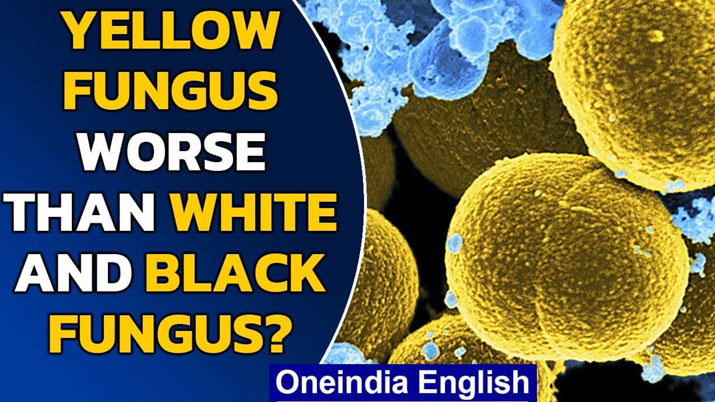A three-member panel of scientists set up by the Centre said they expected India’s second Covid-19 wave to taper off by the end of July and a third wave to hit the country in another six to eight months.
Meanwhile, the Union government on 20th May, 2021, urged states and Union Territories to make mucormycosis or black fungus a notifiable disease under the Epidemic Diseases Act, stating that the infection is leading to prolonged morbidity and mortality among COVID-19 patients. However, the reports of white fungus cases have also raised concerns as infection is found to be more deadly than the black fungus.
According to a report by Times Of India, both white and black fungus infections are caused by fungi moulds called ‘mucormycetes’ which are present in the environment. Head of Department of Microbiology Dr SN Singh said the newly detected fungal infections pose a risk to patients on oxygen support and is reported to cause skin damages. If detected late, the infection can lead to death, he warned. The doctor appealed to COVID-19 and recovering COVID-19 patients (who have tested negative) to take white fungus seriously. To date, there have been over 8000 cases reported in India. However, as is being witnessed right now, there’s now a new lurking danger, much scarier than black or white fungus- yellow fungus infection.
Black Fungus:
The black fungus or mucormycosis is primarily affecting people recovering from COVID-19. The infection is causing blackening or discolouration over the nose, blurred or double vision, chest pain, breathing difficulties and coughing blood. Mucormycosis predominantly involves the synuses, the eye and at times it can go on to the brain and have nasal involvement. There have been some reports of pulmonary mucormycosis.
West Bengal health department has released an advisory titled ‘Mucormycosis – if uncared for – may turn fatal’, which mentions warning signs of the disease such as pain and redness around eyes or nose, fever, headache, coughing and shortness of breath along with vomiting blood and ‘altered mental status’ – general changes in brain function like confusion, amnesia, loss of alertness and
The advisory pointed out that nasal blockade or congestion, one-sided facial pain, numbness, blackish discolouration over bridge of nose or palate, toothache, loosening of teeth, blurred vision along with chest pain and worsening of respiratory symptoms are suspected signs of being infected by mucormycosis.
Anti-fungal drug Amphotericin-B is being used to treat the cases of black fungus.
White Fungus:
The white fungus is more likely to infect people with low immunity. It can also be caused if people come in contact with water or unsanitary environment containing the moulds. The disease isn’t contagious but a person is said to be vulnerable to the infection since these moulds can be easily inhaled by a patient. The fungus can further spread to vital organs and cause complications.
People with low immunity, commorbidities, diabetes, cancer or those using steroids regularly are at a higher risk of getting infected with the white fungus. Patients of white fungus infection show symptoms similar to COVID-19. The four white fungus cases reported in Patna hospital showed COVID-related symptoms but did not test positive for COVID. In all the cases, the lungs of the patients were found infected. The symptoms can also be similar to black fungus. As the white fungus affects lungs and chest, it may lead to cough, chest pain, breathlessness. The infection may have inflammatory symptoms and cause swelling, infections, persistent headaches and pains.
While the infection can be detected through X-rays and CT scans, the patients are given anti-fungal medication for its treatment. In the cases reported in Patna, the patients were given anti-fungal medicines and they recovered.
Yellow Fungus:
Experts suggest that yellow fungus infection, unlike the two other infections, could be much scarier because of the manner in which it affects the body’s internal organs.
Unlike the two other infections, yellow fungus starts off internally, causes pus leakage, slow healing of wounds, and, in serious cases, can also cause devastating symptoms such as organ failure and acute necrosis. Symptoms of yellow fungus are laziness, loss of appetite, or no appetite at all, and severe weight loss. The causes behind yellow fungus can range from high humidity to old food, however, the primary cause is said to be poor hygiene. Getting rid of old food, proper disposal of feces can block the bacteria and fungus from growing. If medical help is taken on time, the yellow fungus is treatable. Amphotericin B injection, which is an anti-fungal drug is used in the yellow fungus treatment.


